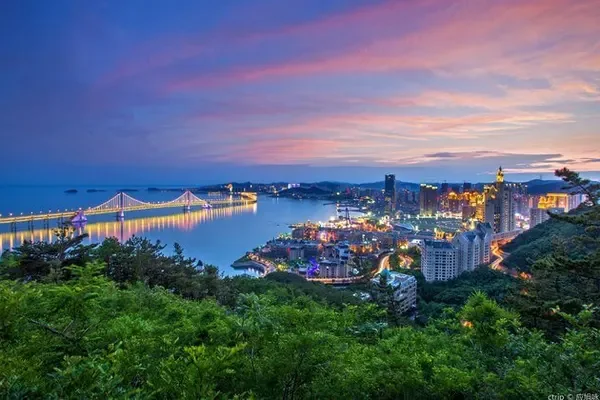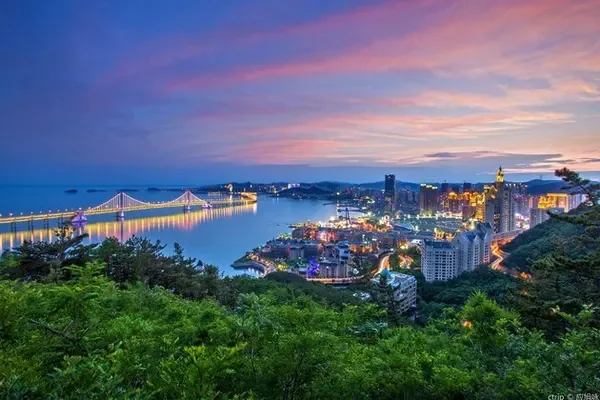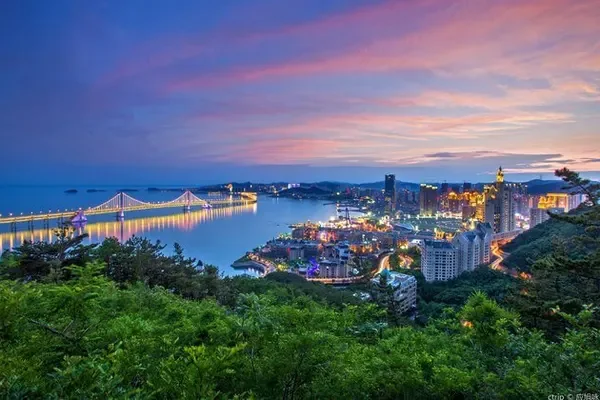
Foreword Beijing, most people mention your long history and the appearance of a prosperous city, but I prefer your tranquility, and the heavy historical style gives you an extra solemn and majestic color. I met you twice, walked, watched, your changes, and my growth, let me change my feelings towards you! The appearance of the station represents the city

The history of Beijing Railway Station can be traced back to 1901 AD (the 27th year of the reign of Emperor Guangxu of the Qing Dynasty). The original site was located on the east side of the Zhengyangmen Wengcheng. It was first built in 1901 and completed in 1903. Historically, station names such as Qianmen Station, Beijing Railway Station, Beiping Station, Beiping East Station, and Xingcheng Station have been used. On September 30, 1949, it was renamed "Beijing Railway Station". Beijing Railway Station is located to the west of Dongbianmen, to the south of Chang'an Street between Dongdan and Jianguomen, to the east of Tonghui River, to the west of Chongwenmen, and to the south is the ruins of the city wall of the Ming Dynasty. Before the opening of Beijing West Railway Station, the main local trains, express trains, express trains and direct trains from Beijing to all parts of the country departed from Beijing Railway Station.
Your melodious bell on the hour, crisp and loud, seems to tell us that the world is still going on, and you are going back safely! early morning flag raising

The flag-raising time in Beijing depends on the time of sunrise, and it changes every day. I got up at 5:00 a.m. that day, set off from the North Fifth Ring Road, and arrived at Tiananmen Square. Walking out of the main gate, stepping neatly, making preparations, the moment the national anthem is played, the blood boils, the flag bearer throws the national flag into the air and flutters in the air, symbolizing prosperity, the national flag rises slowly and finally flies to the highest point, and the heart cannot be restrained after the end !


The People's Monument is located in the center of Tiananmen Square in Beijing, on the north-south central axis about 463 meters south of Tiananmen and 440 meters north of Zhengyangmen. It is a monument built by the government of the People's Republic of China to commemorate the revolutionary martyrs in modern Chinese history.

Chairman Mao Memorial Hall 1. Opening hours
Tuesday to Sunday, 8:00-12:00 (except for national holidays and activities in Tiananmen Square, please keep an eye out for changes in viewing time).
On September 9 (comrade Mao Zedong's death anniversary) and December 26 (comrade Mao Zedong's birthday anniversary), the opening hours are 8:00-11:30, 14:00-16:00.
2. Matters needing attention
1. Paying homage and visiting must be free to line up and enter the venue with valid certificates.
2. Consciously accept the security check. It is strictly forbidden to bring guns and ammunition, controlled knives, flammable and explosive and other dangerous items into the venue.
3. It is strictly forbidden to bring handbags, backpacks, cameras, video cameras, water glasses, drinks and other items into the venue. Those who have the above items please deposit them at the bag depository first.
4. Pay attention to neat and decent clothes, and take off your hat to pay respects. Those who wear vests and slippers are not allowed to enter.
5. Be quiet. Please turn off your mobile phone or turn it to silent mode, do not make loud noises, laugh and play.
6. Pay attention to keep the environment clean. No smoking, no spitting, no chewing gum, no littering of cigarette butts, peels, paper scraps and other waste, no climbing over railings, stepping on flower beds and lawns.
7. Abide by public morality, give in to each other, and take the initiative to take care of the old, young, pregnant and disabled.
8. Take good care of the money and belongings you carry with you. Do not leave your belongings in the custody of strangers.



Forbidden City

Meridian Gate













There are so many treasures inside that I can’t even see them. Unfortunately, it’s a security issue. I can’t even enter the room. I can only watch it from the window. It’s blurry, so I won’t post it! In 1987, the Forbidden City in Beijing was included in the world cultural heritage. The evaluation of the Forbidden City by the World Heritage Organization is: "The Forbidden City has been the highest center of power in China for more than five centuries. With its garden landscape and 9,000 rooms containing furniture and handicrafts, it has become an invaluable place for Chinese civilization in the Ming and Qing Dynasties. Historic testimony. Once, Wang Guowei, a master of Chinese studies, invited the abdicated emperor Puyi to his home as a guest, and enthusiastically showed the little emperor his collection of antique calligraphy, paintings, gold, stone and jade, but Puyi just pointed at a few pieces and said these is fake.
Wang Guowei's attainments in literature and history are very high, and his antiques are all carefully selected. The little emperor just looked at them casually and said they were fake, and he was very unconvinced. So I took it to my peers and antique bosses for appraisal, and finally found that the few Pu Yi pointed out were really fakes.
It was only then that he fell in love with the five bodies that the little emperor admired. He was so proficient in this industry at such a young age, but Puyi said: "I don't know how to identify it at all, but those things don't look the same as the ones in my house."

The Summer Palace The Summer Palace, a royal garden during the Qing Dynasty in China, formerly known as Qingyi Garden, is located in the western suburbs of Beijing, 15 kilometers away from the urban area, covering an area of about 290 hectares, adjacent to the Old Summer Palace. It is a large-scale landscape garden built on the basis of Kunming Lake and Wanshou Mountain, based on the West Lake of Hangzhou, and drawing on the design techniques of Jiangnan gardens. It is also the most complete preserved royal palace and royal garden.
museum


Renshou Hall is located in the East Palace Gate of the Summer Palace. It is one of the main buildings in the palace area. It was called "Dian of Qinzheng" during the Qingyi Garden period of Qianlong. It was built in 1750, which means not forgetting to manage government affairs diligently.







no one is repeated




Olympic village

grandpa and dad

Water Cube



The Great Wall is one of the New Seven Wonders. In December 1987, the Great Wall was listed as a world cultural heritage. The Great Wall staggers from east to west, north to south, and stretches and undulates on the vast land of our great motherland. In addition to the "outer" Great Wall, the Ming Dynasty also built the "inner" Great Wall and the "Inner Three Passes" Great Wall. The Great Wall was built more than 2,000 years ago in the Spring and Autumn Period and the Warring States Period. The existing remains of the Great Wall are mainly the Ming Great Wall built in the 14th century. According to the data released by the State Administration of Cultural Heritage in 2012, the total length of the Great Wall of the past dynasties was 21,196.18 kilometers; and the State Administration of Cultural Heritage released the survey data of the Great Wall of the Ming Dynasty in 2009, and the total length of the Great Wall of China in the Ming Dynasty was 8,851.8 kilometers. The Great Wall is a great miracle created by the working people in ancient my country and a witness to China's long history. It is listed as one of the seven wonders of the medieval world together with the Colosseum and the Leaning Tower of Pisa. It is like a giant dragon, climbing over the towering mountains, passing through the vast grassland, across the vast desert, and rushing to the boundless sea.
If you don't reach the Great Wall, you are not a hero, and the journey is only 20,000. ——Mao Zedong There are crowds of people, the roads are wide and dangerous, climb uphill with your head bowed, and run downhill with your head up. Most of the energy is used to brake, otherwise it will not stop, it is too steep.







I was alone on this trip to Xiangshan. My uncle and aunt both went to work, and I couldn’t stay alone, so I climbed the mountain when I had time, and I climbed the mountain when I disagreed. I like climbing mountains, I like the feeling of climbing to the top and seeing all the mountains and small mountains at a glance. Xiangshan Park is located in the western suburbs of Beijing, with steep terrain and continuous greenery, covering an area of 188 hectares. It is a royal garden with mountain and forest characteristics. The main peak in the scenic area is Xianglu Peak, commonly known as "Ghost Seeing Sorrow", with an altitude of 557 meters. Xiangshan Park was built in the 26th year of Jin Dading, and has a history of nearly 900 years.








Quite quiet


Zen Room Flowers and Trees

Prince Kung's Mansion is located in the Shichahai area of Beijing's feng shui treasure, covering an area of more than 60,000 square meters. The back building known as "99 and a half rooms" divides it into a mansion and a garden. The mansion is majestic and solemn, and the garden is beautiful and prosperous. In the front and back sea where the Wang Mansion and Baylor Mansion gather together, the Prince Kung Mansion is known as "the best landscape in the city" for its opulence, and it is also famous for its mansion system comparable to the Forbidden City.


In the deepest part of the mansion, there is a two-story back building, which is 156 meters long from east to west. There are 88 windows in the back wall, and there are 108 rooms in it, commonly known as "99 and a half rooms". The "Fu" stele in Prince Gong's mansion is hidden in the rockery in the garden. This rockery is made of glutinous rice paste and is very strong. There are two tanks on the hill. There are pipes at the bottom of the tanks leading to the rockery. Ways to increase the humidity in the yard. There is a quiet "Dongtian" under the rockery, which is called Miyun Cave. In the middle of the cave, there is a stele with the word "Fu" written by Emperor Kangxi to celebrate the birthday of his grandmother Empress Xiaozhuang, engraved with the seal of "Kangxi Imperial Brush". The monument is about 1 meter high and 80 centimeters long, running through the entire rockery. The stele with the word "Fu" means blessing the whole garden. Because there are very few inscriptions left by Emperor Kangxi, the stele with the word "Fu" is even more precious. You can't take pictures, so there are no photos. The "Fu" stele in Prince Gong's Mansion is the treasure of Kangxi's imperial pen. It is hidden in Miyun Cave, and it is called "Dongtian Fudi". Looking at the "Fu" character written by Emperor Kangxi himself, it is powerful and powerful. , the stroke in the upper right corner is like a character "Duo", the bottom is "Tian", and the left radical is very similar to the characters "Zi" and "Cai", and the right radical is like a character "Shou", so the whole character "Fu" can be decomposed It means "more fields, more sons, more talents, more life and more blessings", which ingeniously constitutes the meaning of the word Fu, which is very artistic and meaningful. What is even more precious is the upper right side of the stele, which is engraved with Kangxi's jade seal to affirm blessings, so the word "Fu" is known as the best blessing in the world.


How many hutongs are there in Beijing? According to literature records, there were as many as several thousand in the Ming Dynasty, including more than 900 in the inner city and more than 300 in the outer city. In the Qing Dynasty, there were more than 1,800 articles; in the Republic of China, there were more than 1,900 articles; at the beginning of the founding of New China, there were more than 2,550 articles. Later, some old names were merged, and some were newly named; since the reform and opening up, with the development of economy and urban construction, some were demolished and remodeled. Up to now, there are more than 4,000 names of streets and alleys in Beijing.
The longest alley, Dongxijiaomin Alley (6.5 kilometers in length)
The shortest hutong Yichi Street (only 15.2 meters long)
Lingjing Hutong, the widest hutong, the widest point is 32.18 meters
The narrowest alley Qianshi alley (the narrowest point is only 0.44 meters)
The Hutong with the Most Turns Nine Bends Hutong (19 turns)
The oldest hutong brick tower hutong (already existed in the Yuan Dynasty)
The only remaining cross-street building Guanyinyuan cross-street building
Although most of the hutongs in Beijing are oriented south and north, east and west, there are also side streets.



Houhai is said to be the "sea", but it is actually a huge artificial lake, a clear pool exclusively enjoyed by the royal family in the old days. Houhai is located in the center of Beijing, only four or five stops away from Tiananmen Square. It is connected to the famous Beihai by a single water, and it is far away from Jingshan and the Forbidden City. Walking along the coast, if you don't pay attention, you will see the blue tiles and red walls. Outside those tall and solemn gates, only the tall and dense trees in the courtyard can be seen. Faint reveals the mystery. It is said that the waters of Houhai are connected to the dragon veins of the Forbidden City, and it has been a geomantic treasure since ancient times. Therefore, eminent monks of past dynasties built temples here, while princes and ministers chose sites to build mansions and gardens on the shore, and celebrities also moved to the lakeside one after another, starting the initial waterside life on Houhai. Therefore, as the saying goes, "there is Shichahai first, and then there is Beijing City".







Humans have a "cheap" nature. We are often in a crowded environment, where people interfere with each other, lack respect, and constantly need to talk to others, so we seldom talk to ourselves. Staying away from the hustle and bustle is because we have lost interest in the relationship between people, and the noise caused by crowding is not good for our leisure and tranquility. Only when you are quiet can you appreciate the beauty of life and the beauty of others with leisure. Only when you are not forced to talk to others will you talk to yourself. Dialogue with yourself is self-reflection and wisdom when thinking about yourself

The new building of CCTV, located in the Beijing Guomao CBD business district, really adds a lot of color to the prosperous east of Beijing. Originally all high and low office buildings, a diagonal building appeared in the middle. Although it was much shorter than the new buildings such as China World Trade Center Phase III, it was not less eye-catching. However, contrary to this magnificent building that has attracted much attention and received a lot of praise, one of the most popular popular names on the Internet, "big underpants", has caused controversy.



